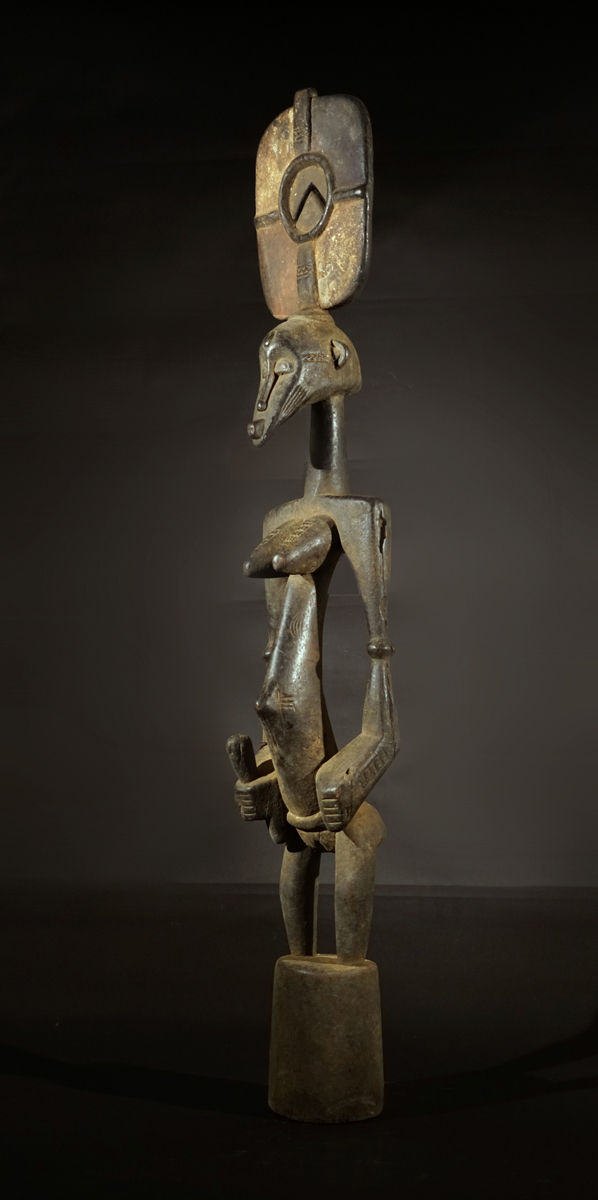 |
 A female Rhythm Pounder, called déblé, rising from a thick cylindrical base, the bent legs with great tension leading to the tight hips, the swayed lenticular torso framed by the square shoulders, carved armbands above the elbow leading to the faceted forearms with hands resting to the sides, holding a rattle in the left hand, the elongated neck supporting a head with strongly projecting chin and scooped facial plane, straight noses bisecting the almond shaped eyes and semi circular shaped ears, surmounted by a rectangular, rounded disc with an openwork triangel at the center; fine dark brown patina with reddish, ochre, and white pigments, a significant touchpatina at the neck and the arms, verifying a long lasting ritual use, the right arm with insect damages fixed by a metal bracket and iron wires. Wolfgang Jaenicke Gallery, Berlin
Many of these Rythm Pounders were used like a hammer to open symbolically or more or less directly a hole in the thick adobe wall of a hut, to carry the dead body of a man - it´s a male sculpture - outside for funaral purpose. In the literature is only described the pounding on earth and the swinging over the ground, but not the described function, which is the reason for the desolat conditions of many déblé bases. W.J.
Gottschalk Burkhard, "Senufo, Massa und die Statuen des poro", Glaze Anita J. , "Art and Death in a Senufo Village", Indiana University Press, Bloomington 1981, Goldwater Robert, "Senufo Sculpture from West Africa" - The Museum of Primitive Art New York, 1964
sold
Height: 129 cm
Weight: 7 kg |
 photo: tribalartforum.com/ identification no. DSC05715.jpg
photo: tribalartforum.com/ identification no. DSC05715.jpg |
|